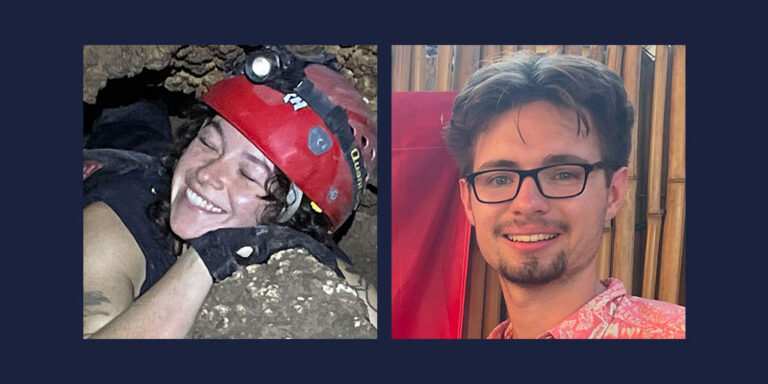2016 Annual Reports of the AAG Regional Divisions
Reports from Regional Councillors
Richard Kujawa, chair of the regional councillors, provided a summary of regional division updates with the full reports to be provided on the Association website. The highlights that he presented for each region are as follow:
East Lakes
Extremely limited funding for replacing or hiring additional faculty and for purchasing improved and emerging technologies, especially Geo Info Systems and Remote Sensing. General decline in geography BA and MA majors over the last five years (although many departments still teach large and increasing numbers of service classes and students including those for general education requirements all students must meet).
Great Plains/Rocky Mountains
2016 GPRM Regional Meeting to be hosted by the Department of Geography and Environmental Studies at the University of Colorado, Colorado Springs on October 21-22. 2017 GPRM Regional Meeting to be hosted by the Department of Geography at the University of North Dakota (date TBA).
Middle Atlantic
The MAD-AAG, for the first time, is able to fully fund its student Geography Bowl Team (The Mad Hatters) to compete at the annual bowl competition in San Francisco. And to assist with this effort, the US Bureau of the Census, Geography Division, agreed to cover student team members’ AAG Conference registration fees. Marking two concurrent developments, Towson University is the new host for the Maryland Geographic Alliance and hosted the 2015 Annual MAD-AAG Conference (if not for the first time, then certainly the first time for most of the region’s current membership). Bringing together a record of almost 40 individual paper presentations, the keynote address drew attention to Baltimore’s negative international publicity following the death of Freddie Gray, in order to reveal new research that points toward opportunities to reverse Baltimore’s declining population and to revitalize the city’s urban fabric.
Middle States
Several departments have expanded, adding faculty, majors, and programs. The growth in programs is especially encouraging. Additions include a Sustainability MA (Binghamton), Meteorology & Climatology, BS (Delaware), Environmental Sustainability major (Oneonta), Geography A.S. (Monroe Community College), BS in GIS (Farmingdale), Geography BA (College of Staten Island), and a Professional Master’s in GIS (Temple). At the same time, there is much budget uncertainty and cutbacks. One major institution has had to eliminate travel funding for graduate students.
New England and Saint Lawrence Valley
In October 2015 Bridgewater State University hosted a successful regional meeting. There were approximately 135 registrations with more than half registering as students. Our keynote speaker this year, a tradition at NESTVAL to hold a public plenary, was Dr. Francisco Henrique de Oliveira from the State University of Santa Catarina in Brazil. He delivered a fascinating talk on cadastral techniques and their impacts on land claims and property ownership in Brazil. NESTVAL made a lifetime achievement award to Vernon Domingo whose tireless work on Geographic Education is known regionally and nationally through his work with the Massachusetts Geographic Alliance, his persistence, with colleagues, in trying to advance a state-wide curriculum in Geography, and through the Earth View touring globe. Our 2016 meeting will be held at Bishops University, near Sherbrooke, in the Province of Quebec. NESTVAL while a region within the AAG is also a bi-national Geography Society and we work hard to keep our Canadian colleagues engaged in our work. If you plan to attend, make sure you have a passport or enhanced license to cross the border. Bienvenue au Quebec, La Belle Province!
Pacific Coast
Across the Pacific Coast Region there have been a number of new programs created within the past year. A sampling of these includes at the Univ. of Southern California an M.S. in Spatial Informatics and Ph.D. in Population, Health and Place; at San Diego State three new research centers with foci in social media data analytics, water resources and climate, and security; at Cal State, Northridge a new curriculum on Water resources with 7 new courses; at Cal State Chico a new B.S degree; at Pierce College an AA-T in Geography (Associate in Arts degree in Geography for Transfer) and an AA degree in GIS; at Portland State a new minor in Water Resources; at San Francisco State a new B.S. in Environmental Science; and at the Univ. of Washington a new online Masters in and Sustainability Management. On the whole there has been more growth in new faculty than loss of positions, a welcome new trend following the severe budget cuts of a few years ago. At least eight departments indicate new hires (Univ. of Washington, Chico State, UCLA, UC Davis, Univ. of Nevada, Reno, Univ. of Oregon, Arizona State and Oregon State) which appear in most cases to be new additions to the faculty.
Southeastern
The division’s Steering Committee approved the appointment of Hilda Kurtz and Deepak Mishra at the University of Georgia as the new editors of the SouthEastern Geographer. The journal is
published quarterly, has a robust queue of submissions, and continues to be managed and printed by the University of North Carolina Press. The incoming editors have discussed options for the journal name and publishing arrangements with the Steering Committee. The SEDAAG Executive Committee has discussed the name of the division in light of the AAG name change effective January 1, 2016. This topic will be considered further at the 2016 meeting.
Southwest
The University of New Mexico and New Mexico State University have proposed a New Mexico Joint Doctoral Program in Geography, to be offered collaboratively. The proposal is going through the review process on both campuses and will spend at least a year going through the approval processes on each campus before moving on to state-level review, pending institutional approval. Both departments are very excited about the PhD proposal. The program will focus on integrative human-environment dynamics and is designed to ensure that students master both theory and praxis, thus preparing them for scholarly and leadership roles within the academy and beyond. The University of Oklahoma Department of Geography and Environmental Sustainability developed an MS in Geography and a Graduate Certificate in Geospatial Information Technologies.
West Lakes
While many states in the region are struggling with budget cuts, the state of Illinois’ continuing failure to pass a budget has resulted in no state funding for any Illinois institution of higher education to date during the current fiscal year. Western Illinois University has put faculty and other employees on furlough or layoffs; Eastern Illinois University is deferring salary payments in addition to staff layoffs; and Chicago State University may not remain open for the current semester. Private universities such as DePaul and Augustana are affected as well, as state grants for low-income students are not being disbursed, and universities are providing the funding themselves. On a brighter note DePaul University won the first AAG Program award and Illinois State University received an Honorable Mention. Congratulations to both programs.Additionally, a new concentration in the Geography BA, geohumanities, also awaits regents’ approval.


